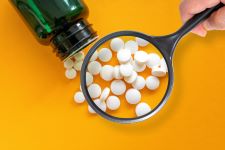Resources
Search >>
Search >>
In today’s food, dietary supplement, and beverage industry, ensuring accurate sugar content in products is more important than ever. With increasing consumer awareness about nutrition and stricter regulatory requirements, companies must verify and control the levels of sugars present in their products. Sugar testing plays a vital role in maintaining product quality, meeting labeling regulations, and supporting claims such as “low sugar,” “no added sugar,” and “zero sugar.” This blog explores the different types of sugars and sweetener alternatives and considerations when submitting products for testing.
Setting Chemical Contaminant Specifications for Dietary Supplements: Navigating the CFR Requirements
Ensuring the safety and quality of dietary supplements is a cornerstone of regulatory compliance. Among the most critical steps in this process is establishing specifications for chemical contaminants. These contaminants, which can arise from raw materials, manufacturing processes, or environmental exposure, must be controlled to meet the standards outlined in the Code of Federal Regulations (CFR). This guide is designed to assist manufacturers in establishing strong chemical contaminant specifications while ensuring regulatory compliance.
The botanical supplement and cosmetic industries are rapidly changing, and the increase in consumer demand calls for upscaling raw material sourcing. This means there is higher pressure for scientifically-valid contaminant testing, including screens for pesticides and heavy metals, while maintaining a fast turn-around time. Watch this webinar to learn modern approaches to contaminant detection, with an emphasis on market trends, broad dietary supplement applications, and OTC cosmetics.
This webinar focuses on best practices for testing dietary supplements with a focus on using scientifically valid test methods. Original air date: April 25, 2022
This presentation reviews sample quality criteria, and the parameters that should be considered in order to produce meaningful and defensible measurement data. A review of the purpose of standardized methods is also presented, and considerations for when it is necessary to apply a modified procedure or an alternate method.











